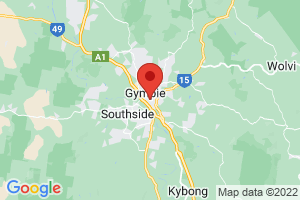Station overview—Gympie

Map marker is indicative only. It does not reflect the exact location of the station.
See all stations in Wide Bay-Burnett region.
Following the extensive 2019–2020 summer bushfires in Queensland, the Department of Environment and Science is expanding air quality monitoring throughout the State to provide more communities with locally relevant particle exposure information and health action advice during smoke and dust events. This expansion includes a network of smoke sensors which provide indicative measurements of smoke and dust levels.
- Monitoring period
- 11 November 2022–
- Parameters monitored
Current measurements at 5pm 5 December 2025
| Parameter | Measurement | Running average |
|---|---|---|
| Particle PM2.5 | - | - |
Legend to air quality category colours about category values
- Good
- Fair
- Poor
- Very poor
- Extremely poor
None of the data is validated (0% validated, 0/1 records)
About air quality categories
Air quality categories are used to make it easier to interpret air quality data by reducing the complexity associated with different pollutant concentration units and air quality guideline values.
Each air quality measurement from a monitoring station is assigned an air quality category rating based on comparison of the measurement value against the relevant air quality guideline. Five colour-coded air quality categories are used, being ‘Good’ (green), ‘Fair’ (yellow), ‘Poor’ (orange), ‘Very poor’ (red) or ‘Extremely poor’ (dark red). Values greater than the air quality guideline will be appear as ‘Poor’, ‘Very poor’ or ‘Extremely poor’.
About these parameters
- Particle PM2.5
Airborne particles less than 2.5 micrometres in diameter, referred to as PM2.5, can be hazardous to human health or cause a nuisance when present in the air at elevated levels. They are capable of penetrating the lower airways of humans and can cause possible negative health effects.
The guideline for Particle PM2.5 is 50µg/m³ (1hr avg) and 25µg/m³ (24hr avg).
Particle PM2.5 is measured in micrograms per cubic metre.


